Also called the Aloha shirt, the Hawaiian shirt is a must-have for me in summer. It’s actually one of my personal favorites—a guilty pleasure. It has had a bit of a rough reputation, although in recent years, it’s regained its former glory.
A bit of History
Hawaiian shirts, as the name suggests… originate from Hawaii. They first appeared in the early 20th century, heavily influenced by Asian cultures—especially Japanese. The design was inspired by Japanese yukatas, Filipino barongs, and Western work shirts. Japanese tailors in Hawaii began crafting them using traditional patterns from yukatas.
In the 1930s, as Hawaii became a popular American tourist destination, the designs evolved to feature stereotypical Hawaiian imagery—palm trees, beaches, tropical flowers. Around this time, the term “Aloha Shirt” was trademarked. During World War II, the shirts gained popularity among GIs stationed in the islands and after the war, they became a symbol of leisure and the island lifestyle.
Celebrities like Elvis Presley and Duke Paoa Kahanamoku (who helped popularize surfing) boosted the shirt’s fame. Today, Hawaiian shirts are seen as both retro and occasionally kitsch—but they’re increasingly embraced as bold fashion statements. Much to my delight.
How to Choose One
The Cut
When it comes to the cut, it should be looser than your regular shirts—but not baggy. It’s a casual garment, and since you wear it in summer, it needs to breathe. The looser fit allows air to circulate and keeps you cool. That said, don’t overdo it—avoid shirts with exaggerated or sloppy proportions. Many vintage Hawaiian shirts have awkward or unflattering cuts, so aim for something relaxed yet well-balanced.
The Collar
My personal recommendation: go for a Cuban collar. You’ll see many so-called summer shirts that are just formal shirts with shorter sleeves—Italian, French, or button-down collars. It doesn’t work. Avoid that office-in-July look. The collar is the most important detail: a Cuban collar, like the one shown below, really captures the easygoing spirit of the Aloha shirt.
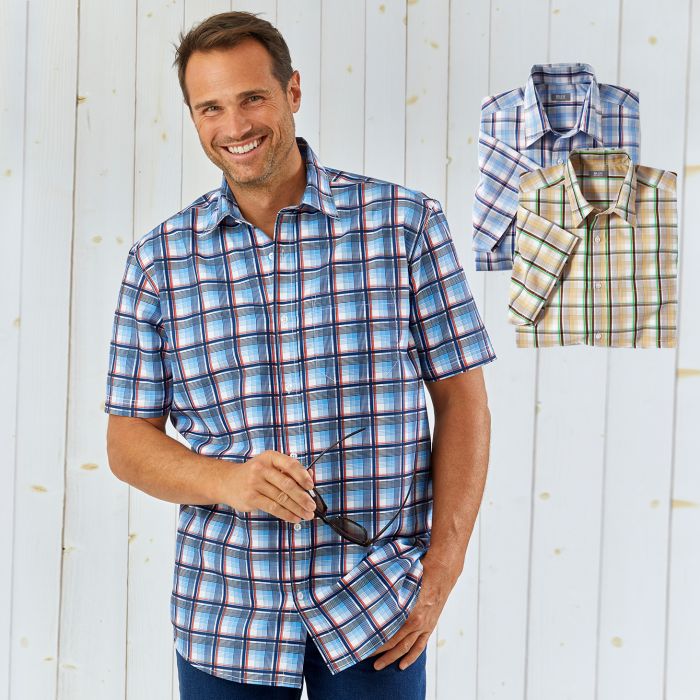
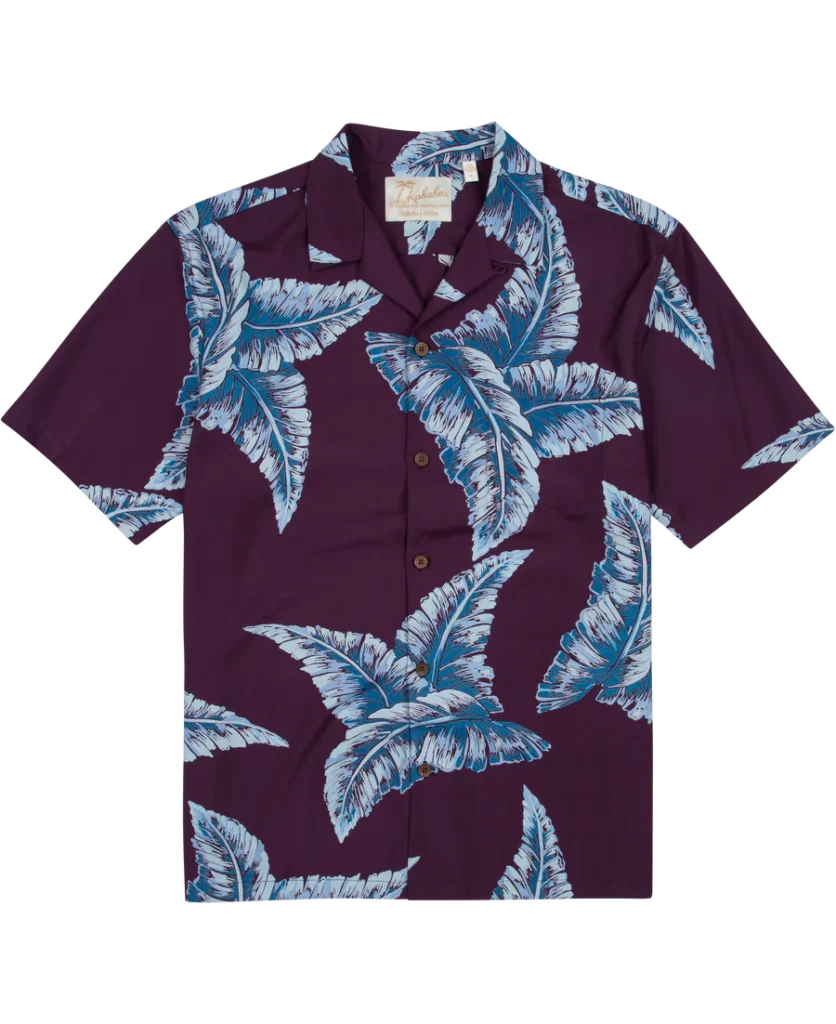
– from the historic brand Kahala
The Patterns
There’s a huge variety of Aloha shirt patterns: florals, greenery, tropical landscapes, oriental prints, bold graphics… Some purists argue that unless the shirt has a traditional Hawaiian pattern, it shouldn’t be called a Hawaiian shirt. I get the point, but to me, the term “short-sleeve shirt” carries too much baggage—usually implying a stiff, formal cut as shown above. So, I’ll keep using “Hawaiian shirt” here. Forgive me in advance.
The Fabric
The most common fabric is rayon. It’s an artificial fabric—not to be confused with synthetic ones like polyester. Rayon was originally developed to imitate silk, and while it can sometimes appear shiny, the good stuff looks and feels luxurious without being flashy. Rayon is breathable, soft, and perfect for summer.
Other excellent choices include cotton, linen, or silk (on the pricier side), or blends of those with rayon. For example, a rayon-linen blend adds texture and structure while reducing shine.
Avoid polyester and synthetic blends at all costs. They trap heat, make you sweat, and often smell unpleasant after a day’s wear. Plus, they usually cost too much for what’s essentially plastic.
As a general rule: the more pockets your shirt has, the more casual it looks. That said, even a single chest pocket covered in tropical flowers or cheeky prints (like naked wahines) already makes it quite relaxed—so don’t overthink this part.
How to Wear it
Below are two outfit compositions that show how to wear a Hawaiian shirt without looking like a confused tourist. A faux pas is always just around the corner, but with a little guidance, you’ll be on the right path.
General Tip
My personal advice: wear it untucked to start with. I’ve tried tucking Hawaiian shirts into trousers, and while it can look amazing when done right, it can also look a bit awkward because of the shirt’s inherently casual vibe. If you’re unsure, wear it untucked—no one will blame you. But when you master it, a tucked Hawaiian shirt can create an unexpected and stylish contrast. (See below for an example where Sandro nailed it.)
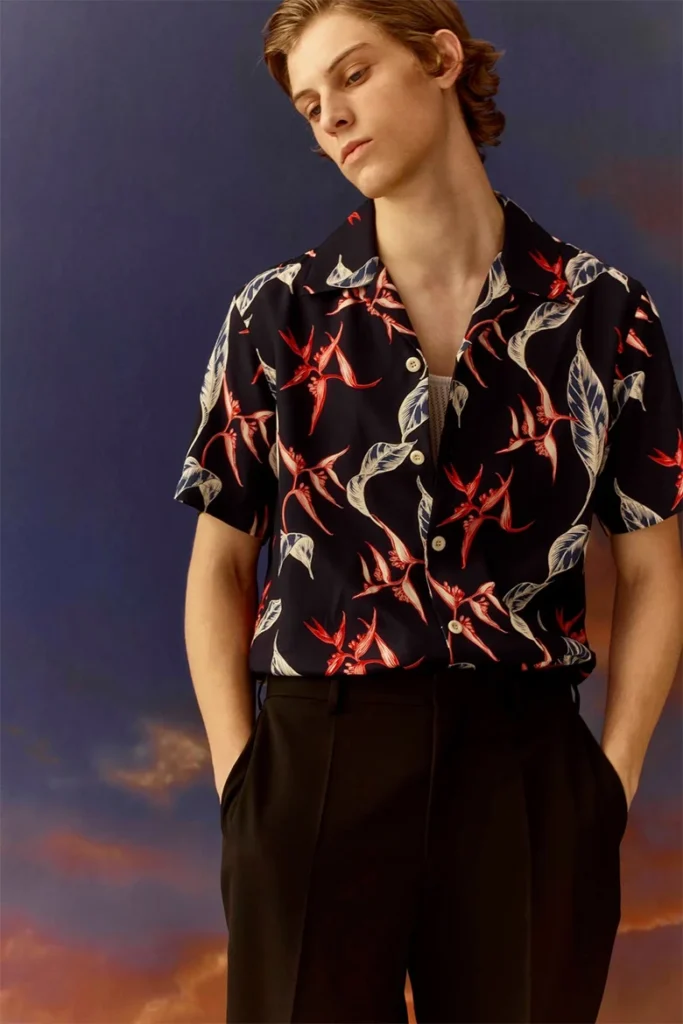
Composition 1: The Hawaiian
For this outfit, I chose a Cala 1789 Hawaiian shirt layered over a tank top—a classic combo. I paired it with linen trousers to preserve the summer mood but elevate the overall look. Add penny loafers and a few accessories, and you’re done.
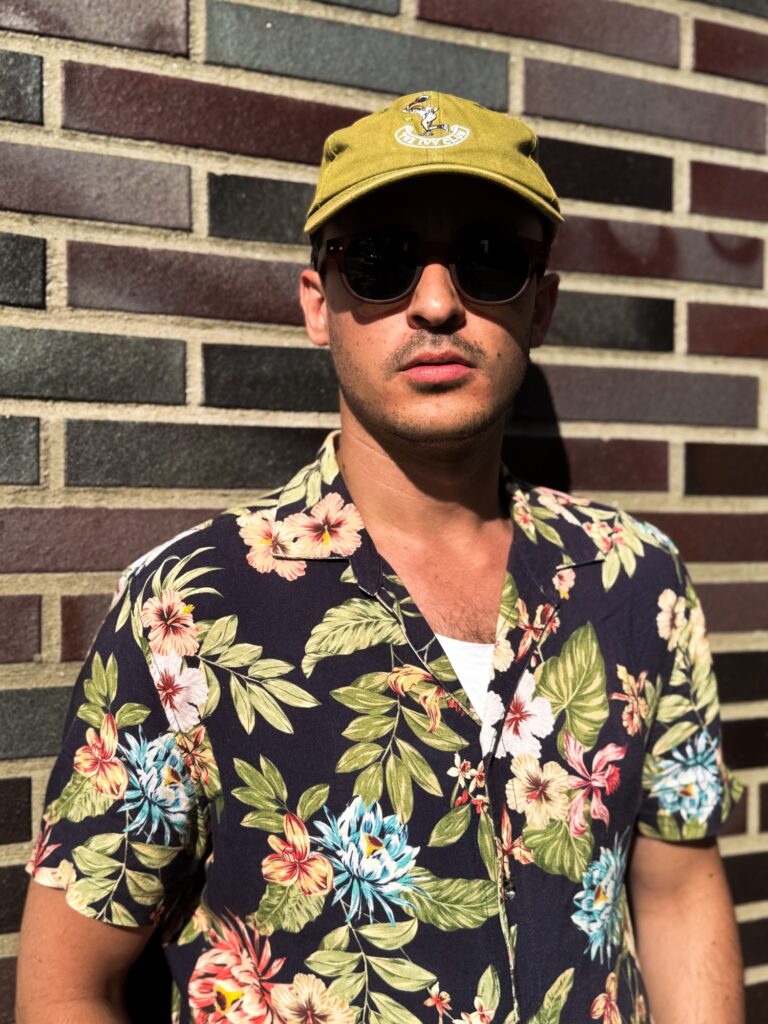
A tank top underneath is always a win. You can skip it when it’s really hot, but it’s a small price to pay for the depth it adds to the outfit.
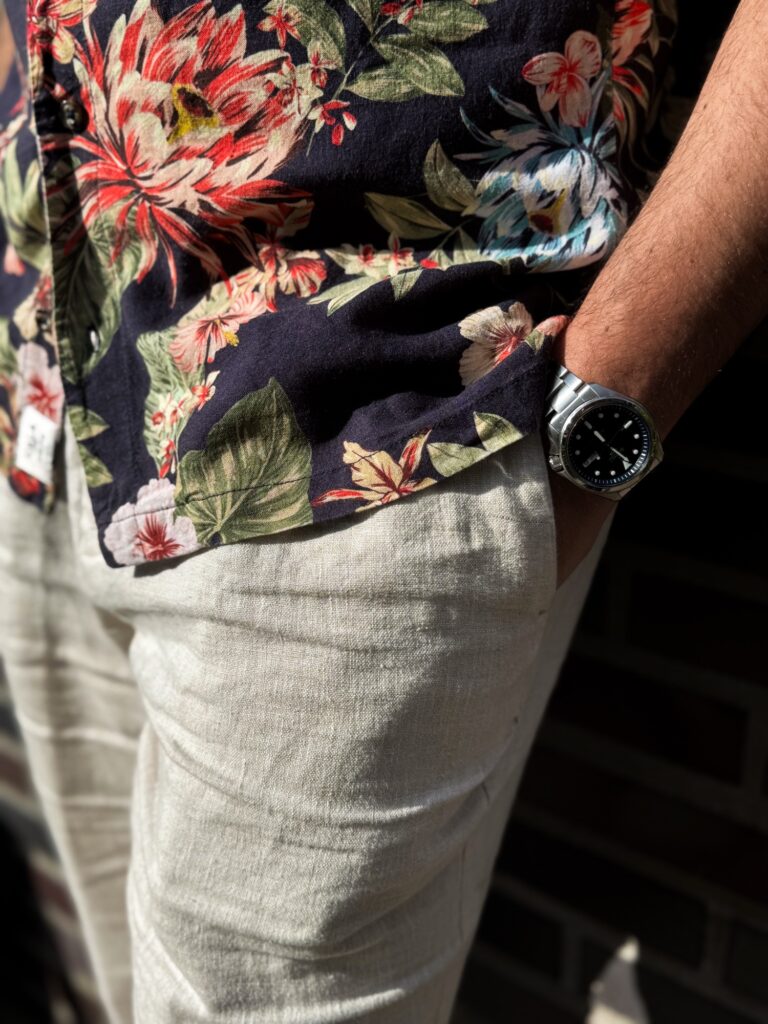
This shirt from Cala 1789 (a French brand from Nice) is made of 60% rayon and 40% linen. That’s an excellent blend—rayon gives softness, while linen brings structure and texture. 100% rayon shirts often look too shiny or clingy; this blend avoids that entirely.
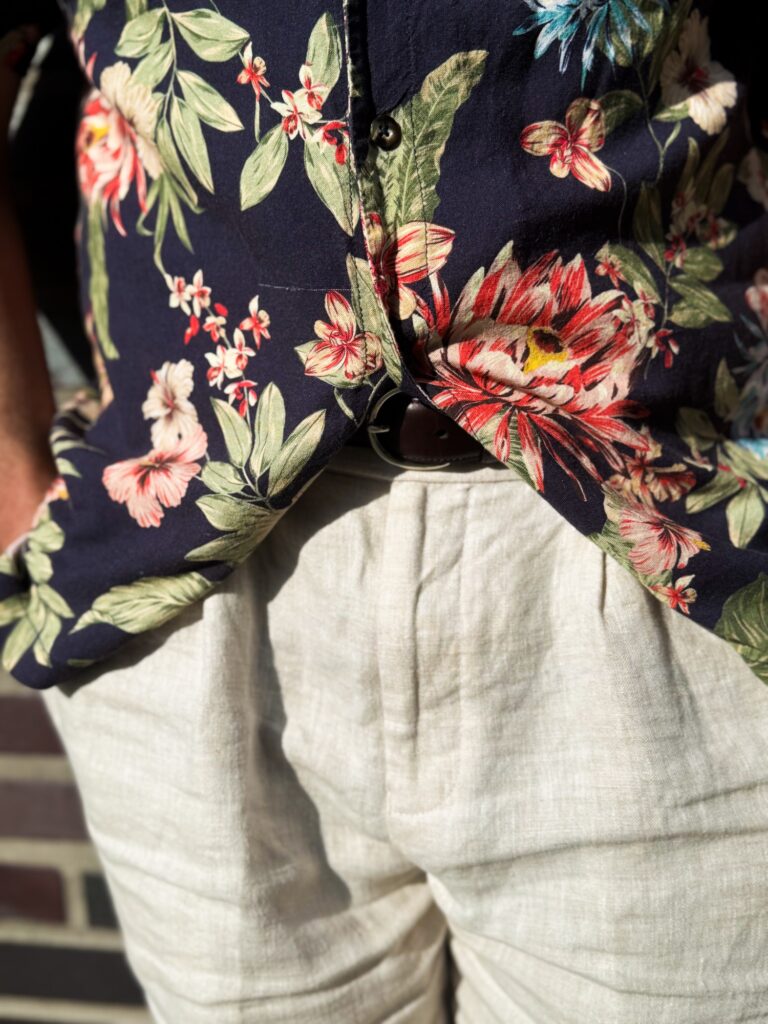
I tried to elevate the Hawaiian shirt by pairing it with pleated linen trousers. The pleats add a touch of formality while maintaining the summer vibe. The linen fabric echoes that of the shirt perfectly. And the color combo? Chef’s kiss.
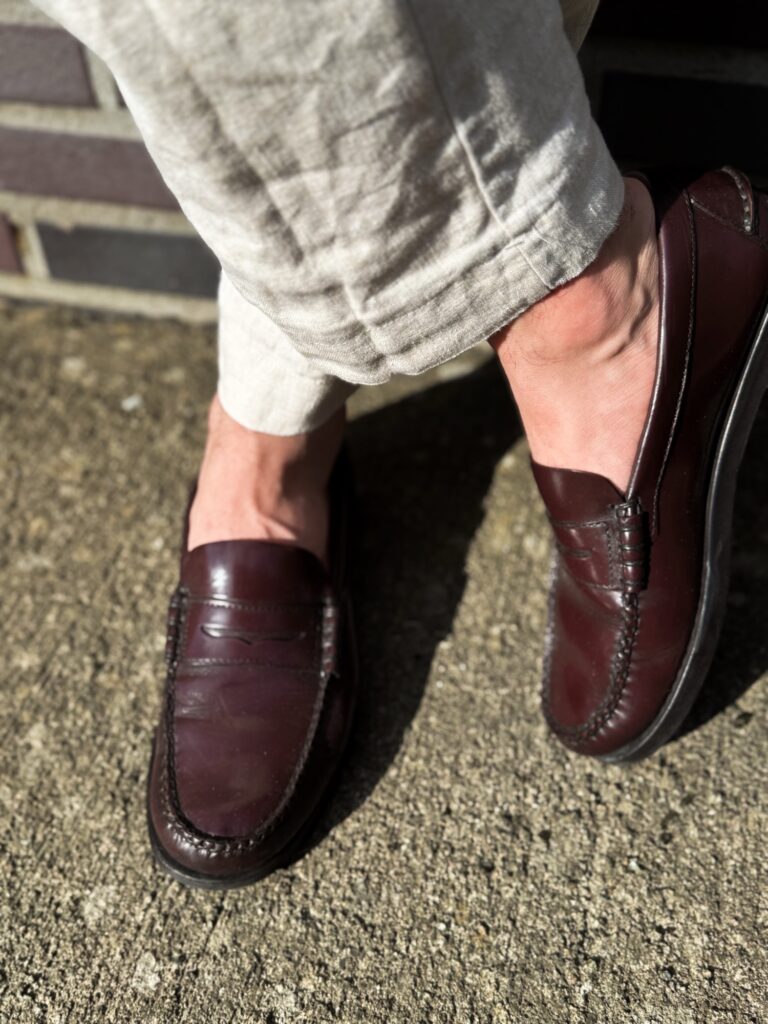
If you’re unsure about shoes: go with brown penny loafers. They work with everything.
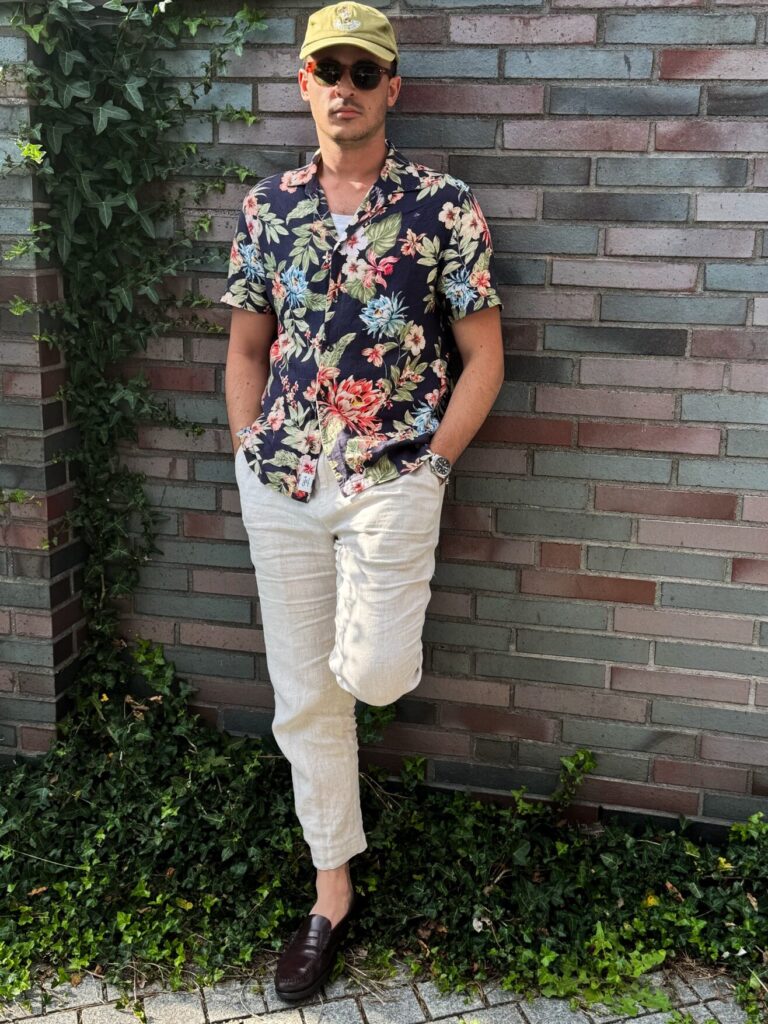
Finish off with a Morjas belt, Seiko 5 watch, a cap from An Ivy Copenhagen, and some Izipizi sunglasses. It’s a full summer look that easily beats the shorts-and-tee uniform most people default to.
Composition 2: The bowler
This shirt from The Kooples isn’t a true Hawaiian shirt—its striped pattern and loose fit lean more towards a bowling shirt. But with its Cuban collar and relaxed cut, it shares the same spirit.
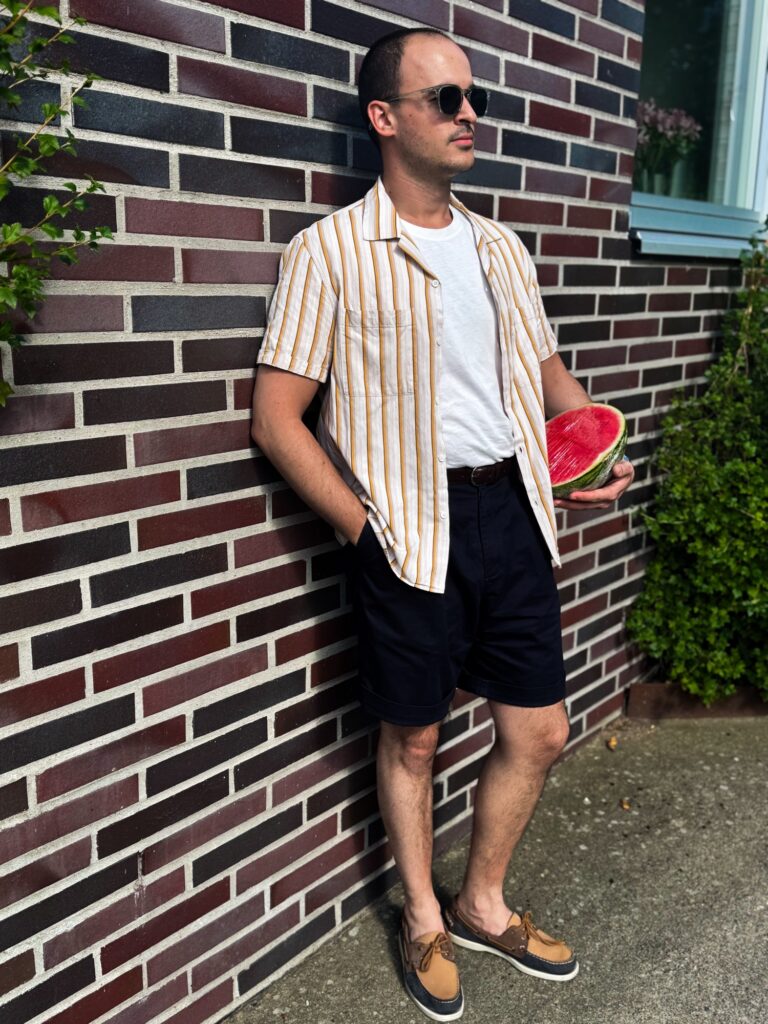
This time, I wore pleated shorts from Samsøe Samsøe, which add nice structure and detail. Instead of a tank top, I layered the shirt over a white Uniqlo T-shirt and left it unbuttoned. A perfectly valid option—as long as you’re wearing something underneath 😉
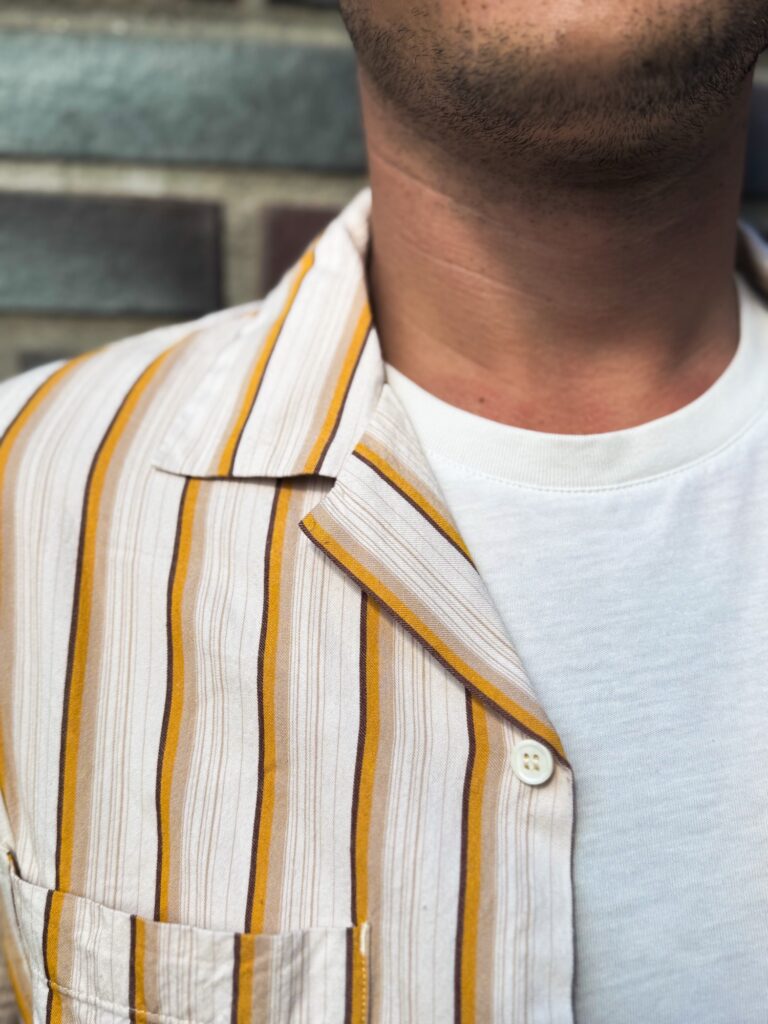
I absolutely love Cuban collars. This Kooples shirt is made of 100% cotton—not the most classic fabric for a Hawaiian-style shirt, but it adds a crisp texture that works well.
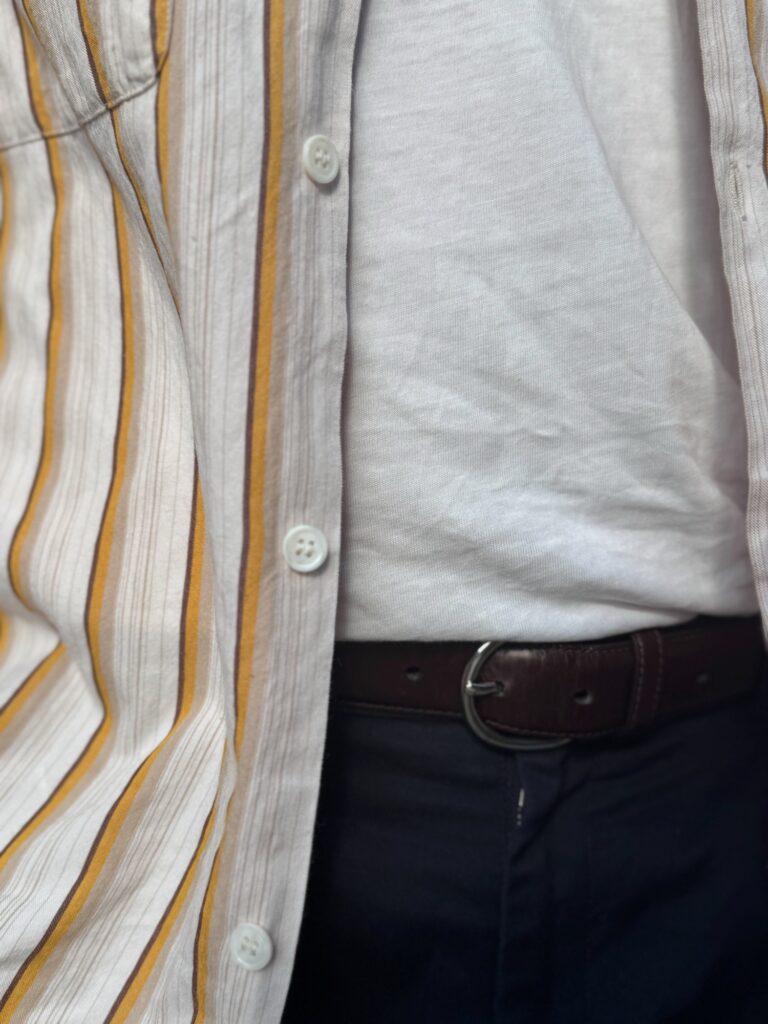
T-shirt + open shirt is a classic combo for both summer and winter. One tip: it always looks better when you tuck the T-shirt in.
Color-wise, blue and yellow, like beige and blue, is always a winning match.

Another summer staple: Sebago boat shoes. You can’t go wrong with them—even with a patchwork like this one.
In Closing
In summer, short-sleeved shirts with Cuban collars (in case they cannot always be called Hawaiian) are essential.
Don’t be afraid of color—but be deliberate. It’s easy to go wrong with a Hawaiian shirt if the colors or fit are a bit off. For me, it’s a high-risk, high-reward piece, but it’s worth it. In a season where layering is nearly impossible and everyone defaults to beige shorts and white tees, the Hawaiian shirt is a savior. It brings personality, character, and joy to your wardrobe.
I’m soon heading off on my honeymoon to Hawaii, and I’ll be trying to get my hands on an authentic shirt there. Stay tuned!
Nice article, I want a Hawaiian shirt now thanks !
Glad I could inspire you! 🤩